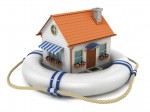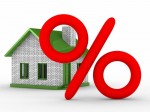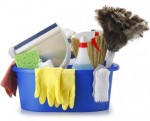Virtual Home Buying Made Easy!

|
|

Serving South Florida


|
|
Filed under: Blog, Boca Raton real estate, contracts, coronavirus, Exclusive Buyer Agency, Exclusive Buyer Agent, First Time Homebuyers, Florida Real Estate, Home Buyer Advice, Home Buyers, Home Financing, home Inspections, Homebuyer Advice, House Closings, Mortgage Information, Real Estate, Real Estate Closings, real estate news, South Florida Real Estate by Kim Bregman
Comments Off on Virtual Home Buying Made Easy!

Filed under: Blog, Boca Raton real estate, coronavirus, Down Sizing, Exclusive Buyer Agency, Exclusive Buyer Agent, First Time Homebuyers, Florida Real Estate, Home Buyer Advice, Home Buyers, Home decorating, Homebuyer Advice, Kim Around the Web, Real Estate, real estate news, Real estate trends, South Florida Real Estate by Kim Bregman
Comments Off on How To Set Up A Home Office

Filed under: Blog, Boca Raton real estate, Exclusive Buyer Agent, First Time Homebuyers, Flood Insurance, Florida Real Estate, Home Buyer Advice, Home Buyers, Home Maintenance, Homebuyer Advice, Homeowners Insurance, Insurance Claims, Real Estate, Real Estate Investment, real estate news, Real estate trends, South Florida Real Estate by Kim Bregman
Comments Off on What Is Not Covered Under Standard Homeowners Insurance?

Moving to a new house, city or state is one of the most stressful things a person can go through. Even when everything goes smoothly, you’ll likely be exhausted when all is said and done. Whether it’s down the street or across the country, moving is a major task that requires much effort and coordination. For this reason, many people choose to hire a moving company, but knowing who to entrust your belongings can be a daunting task.
While you do have the option of going the DIY route when moving, things will be so much easier and more convenient for you if you hire professional movers instead. You’ll incur certain costs by doing so, but the help they can provide is worth it.
It’s also a common mistake to hire the first moving company you lay your eyes on in an ad. There are so many moving companies out there, but not all are created equal. The movers you should hire are legitimate ones with licenses, insurance and other vital considerations. You should also get quotes from at least three movers to determine the best deal. Ask for references and verifying credentials. And remember to never pre-pay for a move!
Local Movers
There are many kinds of moving companies depending on the type of move you’re looking to make. Some companies specialize in local moves and will have limitations on the distance they’re willing to travel. Local movers are great for small cross-town moves since they typically charge by the hour.
Long-Distance
If you’re moving across the country, you’ll want to find a long-distance mover. These movers have special licensing that allows them to operate across state lines and they typically charge a bulk rate based on how quickly you need to be moved and how many items you’ll be moving. In some circumstances, you may even need to move out of the country. International movers will help you pack and get your items overseas. These moving companies are usually prepared for immigration and customs issues.
Full-Service
If you want a completely stress-free move, you should consider a full-service moving company. These companies take all the hassle out of your move by disassembling and packing up your old house and then unpacking and reassembling everything in your new place. Additionally, they provide all of the materials so you don’t have to worry about how much tape you’ll need or what size boxes to get.
Filed under: Blog, Boca Raton real estate, Down Sizing, Exclusive Buyer Agent, First Time Homebuyers, Florida Real Estate, Foreign Home Buyers, Home Buyer Advice, Home Buyers, Homebuyer Advice, International Home Buyers, International investors, Real Estate, real estate news, Relocation, Retirement, South Florida Real Estate by Kim Bregman
Comments Off on Types of Movers for Home Buyers

ALINA Residences is currently under construction on more than 8 acres on Southeast Mizner Boulevard in Downtown Boca Raton. This luxury development is one of Palm Beach County’s latest new construction projects in South County. The development will include a nine-story building with 121 condos, 102 of which will be fully furnished and 12 will be penthouses. The units will range from one to four bedrooms ranging in size from 1400 to more than 4,800 square feet overlooking the Boca Raton Golf Club. Alina will include seven villas with lanais and private gardens.
ALINA, designed by Garcia Stromberg and developed by El-Ad National Properties, will feature more than 32,000 square feet of residents-only outdoor amenities, a club room, fitness center, sauna, steam room, rooftop pool deck with cabanas and bike storage. ALINA’s landscaped outdoor promenades connect to the heart of Boca Raton, where Royal Palm Place, Mizner Park, al fresco dining, upscale galleries, and couture boutiques are all just a stroll away. Surrounded by nature in a peaceful resort atmosphere, ALINA is quietly tucked away in historic downtown Boca Raton, yet so close to a world of conveniences. Envelop yourself in the energy of downtown living, the captivating greenscape of the Boca Raton Resort and Club golf course, and the beauty of nearby beaches and fresh ocean breezes. This rich environment provides an abundance of options for active lifestyles and the opportunity for outdoor fitness and recreation.
View Residences for Sale in ALINA below. Call Kim Bregman at 561-251-7170 for a private showing.
Filed under: aliña, Exclusive Buyer Agent, Florida Real Estate, Home Buyers, International Home Buyers, International investors, Real Estate, Real Estate Investment, real estate news, Relocation, Retirement, South Florida Real Estate by Kim Bregman
Comments Off on ALINA Residences

Any responsible buyer wants to know everything about the home they’re buying before signing on the dotted line. After all, this is probably the biggest purchase you will ever make, so due diligence is a must. The majority of the real estate agents in Florida are Transactional Agents and do not owe the Buyer a fiduciary duty, An Exclusive Buyer Agent does and will work for the buyer to determine all the information known about the property and advise you on inspections, permit searches, etc. Reviewing the Seller’s Disclosure is the first step in this process.
A Seller’s Disclosure in the State of Florida Is a standard form that is essentially a checklist in which a seller indicates the condition of the different features of a property, any known problems affecting the property, and any pending legal issues. This could include things like knowledge of lead-based paint, water damage, pest damage, past repairs, past insurance claims, any history of property line disputes, etc.
Typically, a seller’s disclosure form is filled out by the seller along with their listing paperwork. When buyer’s agents go into the Multiple Listing Service (MLS) to look up potential properties for their clients, that disclosure statement should be available or can be requested from the listing agent.
I am increasingly running into situations wheretransactional brokerage firms are taking the position that since a Seller’s Disclosure is NOT required by law that are not asking the sellers of their listings to fill one out. The first line of the SPDR provides “Notice to Licensee and Seller”; the less they know, the easier it is to make a “deal”. They are relying on the fact that other transactional agents working with buyers will feel the same and not ask for a Sellers Disclosure.
Although sellers aren’t required to complete this specific SPDR form, a residential seller does have to comply with the rule established in Johnson v. Davis. In that case, the Florida Supreme Court held that “where the seller of a home knows of facts materially affecting the value of the property which are not readily observable and are not known to the buyer, the seller is under a duty to disclose them to the buyer.” These material facts are sometimes referred to as latent defects. In addition, in Rayner vs. Wise Realty Co. of Tallahassee, the First District Court of Appeal provided that this same disclosure requirement applies to residential properties that are being sold as is.
In cases were the listing agent does not provide a Sellers Disclosure I request that the Seller answer all my questions in writing and provide a comprehensive list of questions that encompasses everything asked on the SPDR and more.
A seller’s disclosure form is NOT a substitute for a home inspection. Remember, sellers are required to disclosure only problems they know about. Most homeowners don’t go in their attic very often, and have probably never been up on their roof, and they aren’t required to do so before filling out the disclosure. While this document can provide a lot of valuable information, the home inspection is another layer of protection for a buyer.
The importance of this disclosure statement is just one of the many reasons why it’s critical for buyers and sellers to use an Exclusive Buyer Agent ( EBA) during any real estate transaction. EBAs are up-to-date on the latest laws and regulations and are very experienced with the complex documents and paperwork. They can help walk buyers through the disclosure so they understand all aspects of the home they’re buying and recommend the appropriate home inspections ( WDO, Radon, Leak Testing, Mold, and more) to ensure that any hidden defects are found in advance of the purchase.
Filed under: Blog, contracts, Exclusive Buyer Agent, First Time Homebuyers, Florida Real Estate, Home Buyer Advice, Home Buyers, home Inspections, Homebuyer Advice, House Closings, Real Estate, Real Estate Closings, Real Estate Investment, real estate news, Real estate trends, South Florida Real Estate, Uncategorized by Kim Bregman
Comments Off on What Home Buyers Can Learn From a Seller’s Disclosure Statement

Filed under: Blog, Exclusive Buyer Agent, First Time Homebuyers, Florida Real Estate, Home Buyer Advice, Home Buyers, Home Financing, Homebuyer Advice, Mortgage Information, Real Estate, Real Estate Investment, real estate news, Real estate trends, South Florida Real Estate, Tax deductions by Kim Bregman
Comments Off on Key Trends Home Buyers Should Watch in 2019

|
|
|
World events are conspiring to make it more expensive for you to borrow money to buy a house.
Mortgage rates have increased for six consecutive weeks, according to Bankrate data, bringing interest on a 30-year fixed rate loan to 4.44 percent—the highest level in 11 months—while home prices continue to rise due to a lack of available homes.
After years of tepid economic growth, inflation and wage growth recently found a groove, while the Federal Reserve’s plan to raise short-term interest rates multiple times for a consecutive year has reduced the value of government debt.
Homebuyers Should Get off the Fence
Mortgage rates are moved by the yield on 10-year Treasuries, rather than short-term rate hikes by the Fed. That’s why mortgage rates fell throughout 2017, for instance, even as the central bank raised the federal funds rate three times. Rates remain cheap, however, compared to historical prices. A 30-year fixed-rate mortgage came with an interest rate above 6 percent just before the Great Recession in 2007. Potential homeowners should get off the fence and make a bid, assuming you have an affordable home target and adequate savings, because rates are likely only heading north.
Mortgage rates are expected to climb in 2018, so it might be worth shopping for a mortgage before this long period of low rates takes a turn.
Here are several predictions from the largest housing and mortgage groups for the 30-year fixed-rate mortgage:
|
Filed under: Blog, Exclusive Buyer Agent, First Time Homebuyers, Florida Real Estate, Home Buyers, Home Financing, Homebuyer Advice, House Closings, International Home Buyers, International investors, Mortgage Information, Mortgage Interest Deductions, Real Estate, Real Estate Closings, Real Estate Investment, real estate news, Real estate trends, South Florida Real Estate by Kim Bregman
Comments Off on Why Your Mortgage Is Getting More Expensive


Do not read this list and become overwhelmed, it is an extensive list meant to cover basic home maintenance. Not all of these maintenance items will apply to all homes. This is a comprehensive guideline designed for homes in the South as well as Northern climates.
Spring cleaning is a way to demonstrate pride in ownership (or rentership). A home and its contents are investments; money spent on something you really love or really need (ideally both). When you take the time to clean thoroughly and properly, you can maintain and prolong the life of the item or finish for years. Further, it means you live in a cleaner and healthier home; less dust, dust mites, allergens, odors, and dirt.
Always start from the top and work your way down. Think about it like this: dust falls down (like rain or snow) so if you start at the top, you’ll never have to re-clean a surface (which is a time waster). It doesn’t make sense to clean the floors first and then dust the tabletops; you’ll just have to clean the floors again. Use gravity to your benefit and always work from top to bottom. It also helps you not miss anything!
General Spring Cleaning Tasks:
 These are a list of some of the things that need to be done around the house, and spring is a great time to do them. So often we don’t remember to do them, so let this be your wake-up call!
These are a list of some of the things that need to be done around the house, and spring is a great time to do them. So often we don’t remember to do them, so let this be your wake-up call!
Tests and replacements:
Test smoke alarm
Test carbon monoxide alarm
Check flashlight batteries
Check fire extinguishers
Change air filters
Check all window screens for tears and repair or replace as required
Overall Spring Cleaning Chores: 
Remove fingerprints and dirt from light switches and door handles
Spring Clean Outside:

Filed under: Blog, Exclusive Buyer Agent, First Time Homebuyers, Florida Real Estate, Home Buyer Advice, Home Buyers, Home Maintenance, Homebuyer Advice, Real Estate, Real Estate Investment, South Florida Real Estate, western north carolina real estate by Kim Bregman
Comments Off on Spring Cleaning Guide from Optima Properties

Flipping is when real estate investors buy real estate and then resells them at a profit months down the road. Can you make money doing this? Yes.
Can you make a lot of money doing this? Yes.
But you can also lose everything you own if you make a bad decision….Absolutely!
A renovation can be an overwhelming experience with high stakes. Investors must create an overall vision for the project, gauge its financial feasibility, build a reliable team that includes a Realtor, contractors, lender, accountant, insurance agent, designer or architect, and attorney or Title Company, be highly capitalized, and hope that their assessment of the market is accurate and that the property sells quickly. The longer your cash is tied up and you are paying expenses the less profitable your investment.
Thanks to tighter lending standards you will need plenty of cash, and nerves of steel, to get into flipping. So what do you need to get started?
What Makes a Good Real Estate Investment?
Finding an undervalued property in this market can be a challenge. With foreclosure rates down and bank owned property inventory drying up, there is a shortage of inventory compared to just a year ago. Utilizing real estate professionals will greatly assist you in finding suitable properties.
Now Get Working
Relist and Sell
Final Word
Filed under: Blog, Exclusive Buyer Agent, First Time Homebuyers, Florida Real Estate, Home Buyer Advice, Home Buyers, Home Financing, Homebuyer Advice, House Closings, Real Estate, Real Estate Closings, Real Estate Investment, real estate news, Real estate trends, South Florida Real Estate, western north carolina real estate by Kim Bregman
Comments Off on Tips for Investors New to Flipping
 Kim N. Bregman
Kim N. BregmanAll information is provided by the licensed REALTOR®/Broker/Agent. This information is not verified for authenticity or accuracy and is not guaranteed. This website is not responsible or liable in any manner for any content posted herein or in connection with our services. Information is not guaranteed and must be confirmed by the end user.
Copyright © 2024 OPTIMA PROPERTIES. All Rights Reserved. Privacy Policy | Intellectual Property Rights | Sitemap | Real Estate Website Design & Internet Marketing by Agent Image